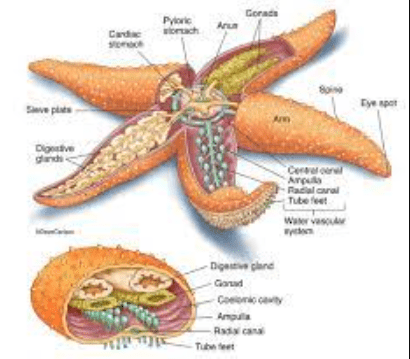Study Reveals Starfish Bodies Are Anything But Traditional Bodies

Study Reveals Starfish Bodies Are Anything But Traditional Starfish Bodies The sea, with all its mysteries, holds a treasure trove of secrets, and its inhabitants often leave us scratching our heads in wonder. One such enigma has long been the sea star, also known as the starfish.
READ: Jeep’s Electrifying Lineup: Unveiling the Electric Jeep Wrangler and the Gladiator 4Xe PHEV
Table of Contents
The Curious Case of Starfish Bodies
These marine creatures, with their five identical arms and curious “tube feet,” have been perplexing scientists for years. The burning question? Do sea stars have heads? And if they do, where on Earth are they hiding their tails?
New genetic research has set out to answer these mind-boggling questions, and the results are as unexpected as finding a fish riding a bicycle. Turns out, sea stars might just be all head and no tail, losing their tail end somewhere along the evolutionary journey. It’s a revelation that could make your jaw drop faster than a sea star’s arm grabbing a snack.
The Tale of the Headless Sea Starfish Bodies
The research, led by Laurent Formery, a postdoctoral scholar at Stanford University and the University of California, Berkeley, has thrown a curveball into the sea star narrative. According to Formery, “It’s as if the sea star is completely missing a trunk, and is best described as just a head crawling along the seafloor.” Forget what you thought you knew about these creatures; this is a sea change!
This groundbreaking discovery was made possible by new methods of genetic sequencing and was recently published in the journal Nature. The research focused on sea star ancestors, which seemed to have had something resembling a torso. The new findings provide a fresh perspective on these oddball creatures.
Echinoderms: Nature’s Oddballs Starfish Bodies
Sea stars belong to a peculiar group known as echinoderms, which includes other oddities like sea urchins, sand dollars, and sea cucumbers. These marine critters have a unique body plan consisting of five equal sections,
unlike the more symmetrical head-to-tail layout of most animals. Sea stars start life as fertilized eggs, then transform from a bilateral body plan (with left and right sides) into their iconic star shape through some magical process.
As Christopher Lowe, a marine and developmental biologist at Stanford University, put it, “How can you go from a bilateral body plan to a pentaradial plan?” It’s a conundrum that’s puzzled scientists for centuries.
Starfish Bodies Cracking the Genetic Code
To get to the bottom of this sea star mystery, the research team used micro computed tomography scanning to create a 3D map of the creatures. They then utilized advanced analytical techniques to identify which genes were expressed in various tissue and cell sequences. This allowed them to pinpoint the genes responsible for shaping the sea star’s ectoderm, which includes its skin and nervous system.
The shocking revelation? Genes associated with the development of a head were found all over the sea stars, especially concentrated in the center of each limb. But genes responsible for torso and tail sections were largely absent. In simpler terms, sea stars are like nature’s head-on-a-stick, defying the conventional anatomy we’ve always known.
A Head-Scratching Evolutionary Twist Starfish Bodies
This discovery sheds new light on the evolution of echinoderms and their unique body plans. It seems that sea stars and their eccentric cousins lost their trunk regions over time,
allowing them to move and feed in peculiar ways. The research, funded by the Chan Zuckerberg Biohub, NASA, the National Science Foundation, and the Leverhulme Trust, has turned the sea star world on its, well, head.
Unlocking New Insights into Evolution Starfish Bodies
While we often focus our attention on animals that resemble us, delving into the world of eccentric creatures like echinoderms can offer invaluable insights into the complexities of life on Earth. As Daniel Rokhsar, a professor of genetics and researcher at the Chan Zuckerberg Biohub, points out,
“If we take the opportunity to explore unusual animals that are operating in unusual ways, that means we are broadening our perspective of biology, which is eventually going to help us solve both ecological and biomedical problems.”
So, the next time you spot a sea star, remember that it might just be a head with a penchant for arm-walking. Nature’s mysteries never cease to amaze, and unraveling them is as thrilling as finding a punchline in an unexpected place.






